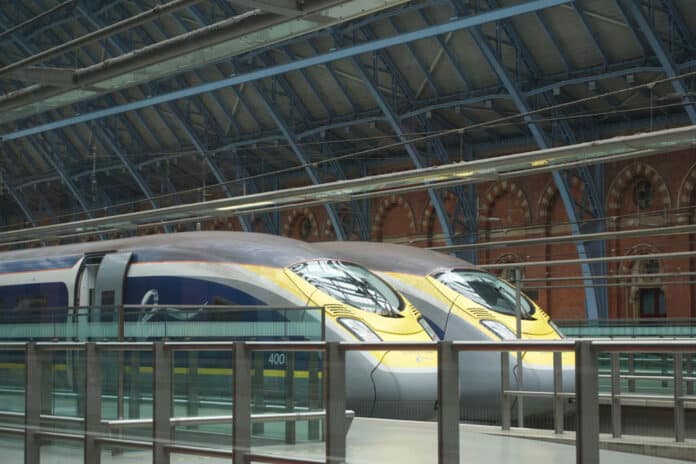The Railway Industry Association’s (RIA) Unlocking Innovation programme returned hot off the heels of the RIA Innovation Conference, turning its attention to ‘Developing Whole Systems in the Digital Age’. In a first for RIA’s the programme, it will host a range of whole systems experts from clients and suppliers throughout this week. The first event focused on using a systems approach to properly identify the ‘problem’ (or opportunity) that a project or investment is looking to address.
Setting the scene for the week’s events was High Speed One Chief Executive Dyan Crowther. What is ‘Whole Systems’ you might well ask. Dyan argued that, as an industry, we need to view rail as one whole system of different systems, all of which must work together.
She explained that throughout her time in the industry, she has witnessed many good innovations but also many “pet projects” – that is to say, buying a new asset or piece of technology which doesn’t fit with the rest of the rail system. There is a huge range of new technology and kit that needs to work with existing infrastructure, but introducing it to the current rail network can sometimes lead to unforeseen consequences.
Now is a particularly important time, as post-pandemic “there is an opportunity to rise to quicker, cheaper, better, greener”, Crowther added. But to do so, she stressed, we to recognise we operate within a system – there are often incomplete schemes or changes which can’t be considered in isolation.
Crowther highlighted a recent project that HS1 has led, funded by Innovate UK and in partnership with organisations including Network Rail and the University of Sheffield. They have placed sensors on lifts and escalators and point systems to provide critical data to monitor performance of assets. This will help enables fault identification and repairing quicker – saving time and money and improving performance. In short, it will help link platform and station assets on one platform, bring all of the data for HS1 together – according to Crowther “this will revolutionise how they manage lines”.
To wrap up, she stressed that if new technology is adopted, the benefits can be hugely beneficial for services, improving productivity and cutting the time taken to make decisions – “our aim must be to deliver clarity not confusion”, she concluded.
A key argument for rail innovation is take lessons from other sectors, to identify what where cross-industry learning can be made. That was the message from the next speaker, Capgemini Engineering’s Michael Morua, who has experience working in a range of sectors including defence and aerospace. He explained that one of the themes he had seen in other industries was a ‘Whole Organisation’ approach, that brings together the full organisation, information, technology and systems around its people.
He also focused on the use of intelligent solutions – “it is all about digitalisation and the use of new technologies” – adding that rail is at the verge of becoming fully digitalised, with new software environments that are more flexible to change. Michael ended with a challenge to the rail industry to define requirements better, including what they need and not to be too prescriptive when it comes to setting out their key project outputs.
Arvinder Sangha, Senior Systems Consultant and from Harmonic Ltd, then covered their experience of ‘user stories’ – those with first-hand perspective of using a system such as an operator or maintainer – in order to identify problems. Arvinder explained that through these User Stories, they are able to develop an early definition of a Minimum Viable Product while still in the ‘concept phase of a project’.
Greg Kotecha, Head of Systems Engineering at South Western Railways, was next to set out his work ‘developing concepts of operations’, from an operator’s perspective. He emphasised that given the complexity of the railways, whatever system they are introducing, they need to understand exactly what the problem is that the new solution is trying to address. Another challenge is to identify and engage with whoever else is involved in a project – often this includes the infrastructure manager and other operators that may be working with different systems.
He also highlighted the challenges around introducing or reintroducing fleets to the network, giving his experience of reintroducing Class 442s on the SWR routes, where they found challenges with signalling. Kotecha stressed that it is in the entire industry’s interest to ensure that systems work together – including suppliers and operators – as when there are significant disruptions, it is the passengers that are ultimately impacted.
And finally, the event heard from Christopher Lambert and Katja Sohr from Atkins, who covered ‘Enterprise Architecture’, also bringing expertise from the aerospace and security sectors. Sohr explained that there is a huge amount of rapid change driven by digital technology, but many of the changes now are incremental rather than “big bang” changes. She added that one of the challenges is there are always a range of technological solutions for every problem, which businesses need to choose between. There are also challenges around cost models, particularly given the shift to OPEX rather than CAPEX.
Tuesday’s Unlocking Innovation session involved an interactive workshop on developing requirements. Day Three will cover solutions with Network Rail and the University of Birmingham, Day Four will look at system modelling and simulation tools, and the final day will cover broader challenges to the industry.
As always, RIA’s Unlocking Innovation events are free and open to all. Click here to register.
Photo and copy credit: Railway Industry Association



































 0113 2082620
0113 2082620 info@railbusinessdaily.com
info@railbusinessdaily.com 15 Mariner Court, Wakefield WF4 3FL
15 Mariner Court, Wakefield WF4 3FL

